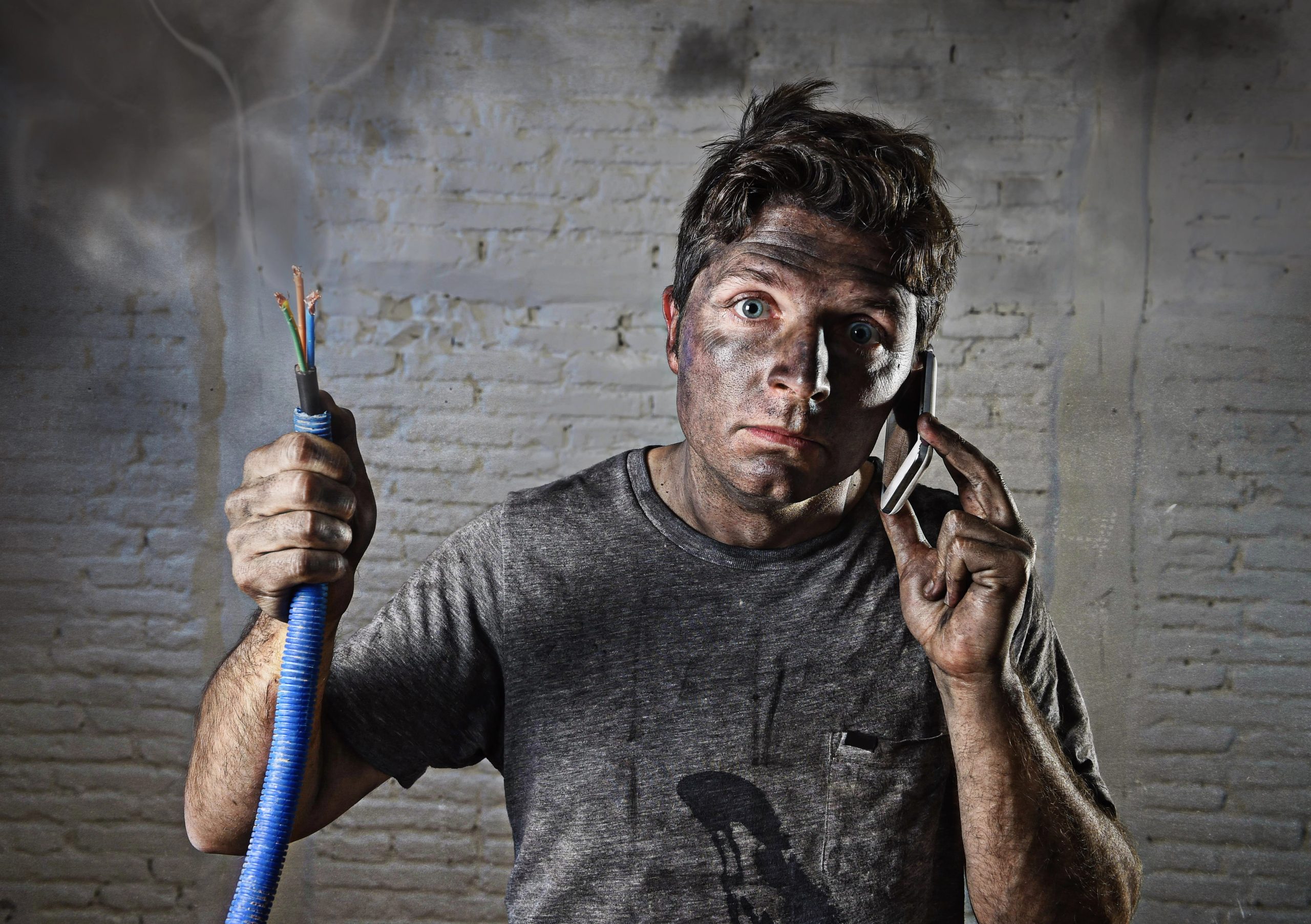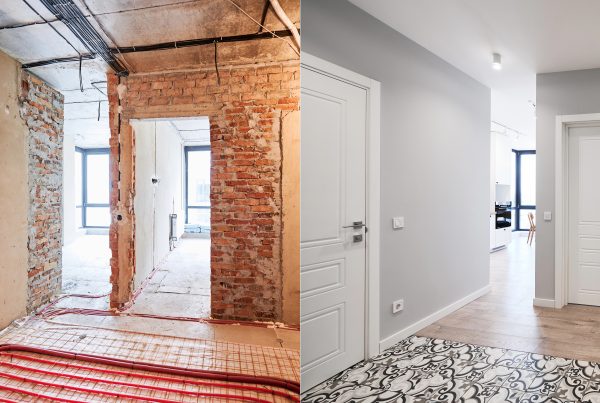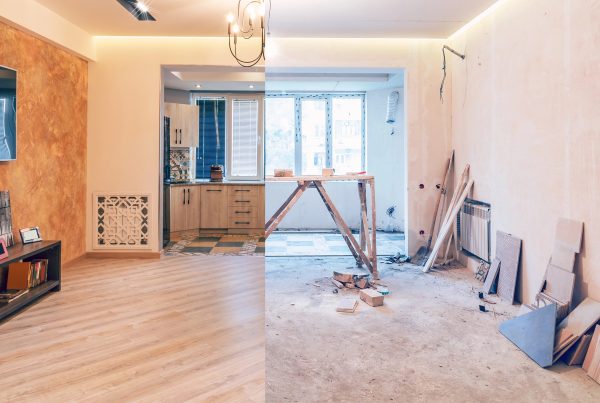Doing it yourself sounds great, but DIY often leads to short-lived results. Social media blur the line between inspiration and real skill, hiding problems that appear later. At Renoverend, we appreciate passion but show where amateur work ends and lasting quality begins.
1. Electrical work – one mistake is one too many
Working with electricity is inherently dangerous. Electrical systems are subject to strict safety regulations and technical standards. Faulty wiring or amateur repairs can result in short circuits, electrocution, or even house fires.
What do DIYers often do wrong?
They install outlets or switches without disconnecting the power, connect wires without proper boxes or insulation, and fail to use essential safety features like circuit breakers or residual current devices. The consequences can include equipment damage, power failures, or serious safety hazards. Worse yet, unauthorized electrical work can void your home insurance if something goes wrong.
2. Plumbing repairs – invisible mistakes that cost a fortune
Water and drainage systems must be perfectly sealed and installed to avoid leaks. Even a slightly loose connection or improperly applied seal can lead to water damage that affects floors, walls, furniture – and even your neighbors.
Typical DIY mistakes include incorrect use of Teflon tape, joining pipes without proper gaskets, or forgetting to vent the system. These errors often result in persistent leaks, mold growth, and water damage that’s expensive to repair. Moreover, many plumbing tasks require specialized tools that amateurs simply don’t have.
3. Wall demolition – structural disaster in disguise
Knocking down a wall to create an open space? It might sound easy, but without expert knowledge, you can’t know whether that wall is load-bearing. Even a seemingly minor structural change can compromise the stability of the entire building.
The result could be sagging ceilings, cracked support walls, damaged wiring or piping – or in the worst case, partial collapse. These kinds of projects often require permits, engineering plans, and oversight from licensed professionals. Taking matters into your own hands could leave you not only with massive repair costs but also potential legal trouble.
4. Tiling – a job for the patient and precise
Laying tiles might look simple at first glance – just grab some adhesive and a level, right? In reality, it’s one of the most meticulous finishing jobs in construction. A smooth substrate, the right adhesive, proper expansion joints, and even grout spacing are all essential.
What often goes wrong?
DIYers frequently tile over uneven or poorly prepared surfaces, resulting in visible lumps or crooked lines. They may apply too little adhesive, leading to loose or cracking tiles over time. Many forget to use spacers, making grout lines inconsistent and harder to clean. On top of that, people tend to choose grout based only on color, ignoring technical factors like flexibility or moisture resistance – which leads to cracking, discoloration, or crumbling.
The end result? Crooked tiles, poor aesthetics, and a job that will likely need to be redone – this time by a pro.
5. Wall finishing and painting – harder than it looks
Painting might seem like the simplest of DIY jobs – just pick a color, grab a roller, and go. But a good paint finish starts with proper wall preparation. If you skip patching, priming, or sanding, the paint won’t adhere properly, and you’ll end up with an uneven, flaky result.
Common amateur mistakes include skipping mesh tape over cracks, not using primer, poor surface leveling, and applying the second coat too quickly. The result? A finish that peels, bubbles, or just looks bad. Fixing it takes more time, money, and frustration than doing it right the first time.
6. Installing air conditioning or ventilation – it’s not just drilling a hole
Mounting an air conditioner involves more than just hanging a unit on the wall. You need to understand refrigerant systems, choose the right power output, ensure leak-proof connections, and legally handle refrigerants – which are often regulated substances.
What can go wrong?
Leaks in the system reduce efficiency, poor insulation causes condensation and water damage, and improper installation can void the manufacturer’s warranty. You might also end up with noisy, underperforming equipment or expensive breakdowns.
“Do it yourself” – or how NOT to become the hero of your own disaster
For example, there was a man in the Netherlands who decided to install a gas stove himself. The problem? He used… painter’s tape to seal the pipes. Yes, you read that right – painter’s tape! The result? Not only was the kitchen off the table, but the entire building had to be evacuated. Probably every DIY enthusiast’s dream: “I did it myself”… followed immediately by “Let’s get out of here!”
Another brave soul wanted to put up a bookshelf, but while drilling into the wall, he hit a central heating pipe. Water started spraying like a fountain, the walls turned into waterfalls, and later they had to be stripped down to the bricks. Who would have thought one hole could cost so much stress and money?
And for dessert – the master of improvisation who sealed his shower tray with sanitary silicone meant for grout… without preparing the surface at all. After a week, all the silicone peeled off along with a chunk of tiles. Well, you could say he had his own very short-lived art project.
These stories aren’t funny when you look at the costs and risks. It’s a lesson that sometimes it’s worth trusting professionals. A well-designed and professionally executed interior is not just a trend, but above all safety, comfort, and everyday peace of mind – and no one wants to lose that, right?
So next time you feel tempted to “do it yourself,” remember these stories and ask yourself – is it really worth it?




